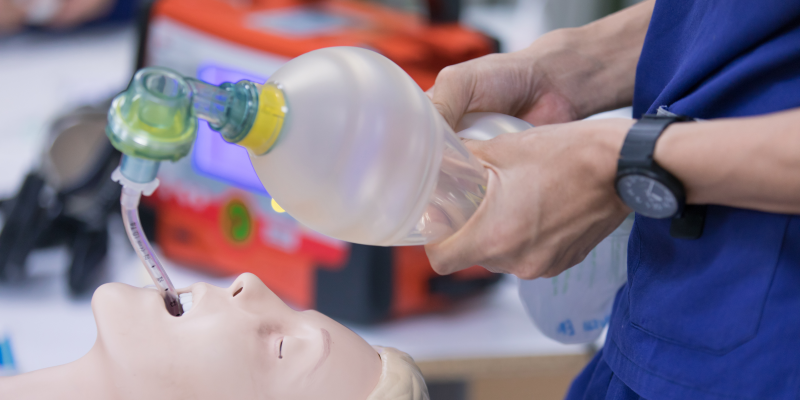
As we know, no two people are the same, and the same standard goes for each person’s airway. Airways come in all shapes and sizes, and to provide better care for patients, practitioners should understand how to treat and overcome the challenges associated with difficult airways. Providers knowing what to do and what not to do when encountering difficult airways is essential for tracheal intubation.
Evaluating a Difficult Airway
The first step to addressing a difficult airway is being able to identify the signs and symptoms. An evaluation should be done immediately on the patient to determine the status of the airway. According to StatPearls, the assessment should focus on the following factors:
- If a patient has suffered from facial, head or neck trauma, or has oral bleeding, regurgitated gastric contents, or frothing of the mouth.
- Determine if there are any missing teeth or excessive trauma to the patient's mouth.
- In cases of compliant patients, a Mallampati evaluation should be performed.
- If the patient has an overbite, this may cause an obstruction of view for the airway.
- Look for any obstructions in the patient’s airway.
- A patient with neck trauma may struggle with proper head movement resulting in an inconclusive airway assessment.
- Obesity can obstruct the airway due to excessive skin folds or fatty tissue within the airway.
Once this evaluation has been completed, the practitioner can move forward with the treatment of the airway. Responders should know and recognize the signs of a difficult airway and be familiar with the treatment options for each one. Preparing for these situations ahead of time takes the mystery out of the procedure.
What You Should Do
EMS World has great tips on what you should do in the event that you need to treat a difficult airway. The tips include:
- DO position the patient correctly. Taking the time to weigh the pros and cons of the different methods of positioning is an imperative first step to saving the patient. EMS World states that emergency responders should consider supine positioning to mitigate the risk of respiratory decompensation. It is also recommended to transport patients in the semi-Fowler’s position whenever possible.
- DO use the right tool for the job. There are a variety of masks and suctioning devices that can aid in the case of a difficult airway. Practitioners should take the time to get familiar with their facility’s equipment and educate themselves on the uses of the devices as much as possible. Practicing with these devices in a variety of scenarios can prepare responders for the worst-case scenarios.
- DO work as a team with other practitioners. The responsibility of saving the patient does not lie entirely with the person holding the laryngoscope or suctioning device. All members on the site of the response should be contributing to the treatment. Pre-planning with your team to strategize how to make the best use of all personnel will have everyone operating smoothly.
What You Shouldn’t Do
- DON’T rush through the treatment steps. By slowing down and taking the necessary steps to complete the procedure the right way, you will ultimately save yourself time in the long run. Yes, these can be high-stakes scenarios, and the patients need you to act quickly, but you must take the time to gather your thoughts and stay calm for the safety of the patient and everyone involved.
- DON’T get frustrated with patients who are not calm or cooperative. In most cases, patients with difficult airways are scared and erratic. It’s critical that responders understand that this is likely one of the most traumatic events of someone’s life, and proceeding with patience will make them feel more at ease.
Overall, there are challenges for practitioners tasked with treating difficult airways, but with proper preparation and understanding of procedures, patients will be in good hands.














